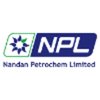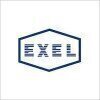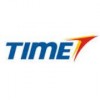
i
Sintex
BAPL
Filter interviews by
Sintex BAPL Fire Supervisor Interview Questions and Answers
8 Interview questions
There are 5 types of fire: Class A, Class B, Class C, Class D, and Class K.
Class A fires involve ordinary combustibles such as wood, paper, or cloth.
Class B fires involve flammable liquids or gases.
Class C fires involve electrical equipment.
Class D fires involve combustible metals.
Class K fires involve cooking oils and fats.
The code for fire extinguishers is a set of standards and regulations that dictate their design, use, and maintenance.
The code is established by organizations such as the National Fire Protection Association (NFPA) and the Occupational Safety and Health Administration (OSHA).
It includes guidelines for the types of extinguishers, their placement, and the training required for their use.
For example, the NFPA 10 stan...
Fire is a chemical reaction that occurs when fuel, heat, and oxygen combine to produce flames, heat, and light.
Fire is a rapid oxidation process that releases energy in the form of heat and light.
It requires three elements to occur: fuel, heat, and oxygen.
Different types of fuel can produce different types of fires, such as wood fires, gas fires, or electrical fires.
Fire can be controlled or extinguished using var...
The height at which sprinklers are fitted depends on the type of building and its fire safety requirements.
Sprinklers are typically installed on the ceiling or walls of a building.
The height of the sprinklers is determined by the coverage area and water pressure needed.
For example, in a warehouse with high ceilings, sprinklers may be installed at a height of 30 feet or more.
In a residential building, sprinklers ma...
Manpower can be handled effectively by proper planning, delegation, and communication.
Assess the workload and allocate tasks accordingly
Delegate responsibilities to capable team members
Communicate clearly and regularly with the team
Provide necessary training and support
Monitor progress and provide feedback
Address any issues or conflicts promptly
Recognize and reward good performance
Maintain a positive and motivatin...
A near miss is an unplanned event that could have resulted in injury, damage or loss but did not.
It is an incident that could have caused harm but didn't
It is a warning sign that something needs to be changed to prevent future accidents
Examples include a worker almost falling from a height, a vehicle narrowly avoiding a collision, or a fire starting but being quickly extinguished
Near misses should be reported and ...
The distance between two hydrant valves depends on the layout of the fire suppression system.
The distance between two hydrant valves should be determined by the layout of the fire suppression system.
Factors such as the size of the building, the number of floors, and the location of potential fire hazards should be considered when determining the distance between hydrant valves.
In general, hydrant valves should be ...
Safety is of utmost importance in fire supervision.
Ensuring all personnel are trained in safety protocols
Conducting regular safety inspections of equipment and facilities
Maintaining clear communication channels for emergency situations
Providing appropriate personal protective equipment
Implementing strict fire prevention measures
Regularly reviewing and updating safety policies and procedures
Sintex BAPL Fire Supervisor Interview Experiences
1 interview found
Interview Questionnaire
13 Questions
- Q1. Why r u leave the last company
- Ans.
I was looking for growth opportunities and a better work-life balance.
I felt that I had reached a plateau in my career and wanted to explore new challenges.
I was seeking a company culture that aligned better with my values and priorities.
I wanted to spend more time with my family and pursue personal interests outside of work.
I left on good terms and have positive relationships with my former colleagues and supervisors.
- Q2. What r u doing in supervisor duty
- Ans.
As a fire supervisor, I am responsible for overseeing and managing firefighting operations.
I ensure that all firefighting personnel are properly trained and equipped
I develop and implement firefighting strategies and tactics
I coordinate with other emergency services and agencies
I conduct regular inspections and drills to maintain readiness
I investigate and report on incidents and accidents
I maintain records and documen...
- Q3. What doing for the company
- Q4. What is the fire
- Ans.
Fire is a chemical reaction that occurs when fuel, heat, and oxygen combine to produce flames, heat, and light.
Fire is a rapid oxidation process that releases energy in the form of heat and light.
It requires three elements to occur: fuel, heat, and oxygen.
Different types of fuel can produce different types of fires, such as wood fires, gas fires, or electrical fires.
Fire can be controlled or extinguished using various ...
- Q5. How many of types fire
- Ans.
There are 5 types of fire: Class A, Class B, Class C, Class D, and Class K.
Class A fires involve ordinary combustibles such as wood, paper, or cloth.
Class B fires involve flammable liquids or gases.
Class C fires involve electrical equipment.
Class D fires involve combustible metals.
Class K fires involve cooking oils and fats.
- Q6. How height was sprinkler fitted
- Ans.
The height at which sprinklers are fitted depends on the type of building and its fire safety requirements.
Sprinklers are typically installed on the ceiling or walls of a building.
The height of the sprinklers is determined by the coverage area and water pressure needed.
For example, in a warehouse with high ceilings, sprinklers may be installed at a height of 30 feet or more.
In a residential building, sprinklers may be ...
- Q7. How distance between the two hydrant valve
- Ans.
The distance between two hydrant valves depends on the layout of the fire suppression system.
The distance between two hydrant valves should be determined by the layout of the fire suppression system.
Factors such as the size of the building, the number of floors, and the location of potential fire hazards should be considered when determining the distance between hydrant valves.
In general, hydrant valves should be place...
- Q8. Is code of fire extinguishers
- Ans.
The code for fire extinguishers is a set of standards and regulations that dictate their design, use, and maintenance.
The code is established by organizations such as the National Fire Protection Association (NFPA) and the Occupational Safety and Health Administration (OSHA).
It includes guidelines for the types of extinguishers, their placement, and the training required for their use.
For example, the NFPA 10 standard ...
- Q9. Is code of dry comical powder
- Ans.
No, the question does not make sense.
The question seems to be incomplete or incorrect.
There is no clear context or meaning to 'code of dry comical powder'.
Without more information, it is impossible to provide a relevant answer.
- Q10. What is the near miss
- Ans.
A near miss is an unplanned event that could have resulted in injury, damage or loss but did not.
It is an incident that could have caused harm but didn't
It is a warning sign that something needs to be changed to prevent future accidents
Examples include a worker almost falling from a height, a vehicle narrowly avoiding a collision, or a fire starting but being quickly extinguished
Near misses should be reported and inves...
- Q11. Tell about the safety
- Ans.
Safety is of utmost importance in fire supervision.
Ensuring all personnel are trained in safety protocols
Conducting regular safety inspections of equipment and facilities
Maintaining clear communication channels for emergency situations
Providing appropriate personal protective equipment
Implementing strict fire prevention measures
Regularly reviewing and updating safety policies and procedures
- Q12. How to handle manpower
- Ans.
Manpower can be handled effectively by proper planning, delegation, and communication.
Assess the workload and allocate tasks accordingly
Delegate responsibilities to capable team members
Communicate clearly and regularly with the team
Provide necessary training and support
Monitor progress and provide feedback
Address any issues or conflicts promptly
Recognize and reward good performance
Maintain a positive and motivating wor...
- Q13. What will your work details
- Ans.
As a Fire Supervisor, my work details include managing and supervising fire prevention and control activities.
Developing and implementing fire safety plans
Conducting fire drills and training sessions for employees
Inspecting buildings and facilities for fire hazards
Ensuring compliance with fire safety regulations
Coordinating with other emergency services
Investigating the cause of fires
Maintaining fire equipment and appa...
Top trending discussions






Interview questions from similar companies
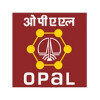
I applied via Company Website and was interviewed before Apr 2021. There were 2 interview rounds.

Interview Preparation Tips
If you want better future
Thank me later

Interview Questionnaire
2 Questions
- Q1. Basic knowledge of polypropylene
- Q2. Characterization
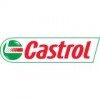
I applied via Newspaper Ad and was interviewed before Jun 2021. There was 1 interview round.
(1 Question)
- Q1. Self abouts and market knowledge
Interview Preparation Tips
Competitors activities
Products benefits
Sceame knowledge

Assistant Manager Interview Questions & Answers
PCBL Chemical Limitedposted on 12 Apr 2022
I applied via Campus Placement and was interviewed before Apr 2021. There were 3 interview rounds.
Basic PCM
(1 Question)
- Q1. Control System PLC Industrial Instrumentation
(4 Questions)
- Q1. Why should we hire you?
- Q2. Where do you see yourself in 5 years?
- Q3. What are your strengths and weaknesses?
- Q4. Tell me about yourself.
Interview Preparation Tips

Interview Preparation Tips

Assistant Manager Interview Questions & Answers
PCBL Chemical Limitedposted on 21 Jan 2023
I applied via Approached by Company and was interviewed before Jan 2022. There were 2 interview rounds.

(3 Questions)
- Q1. Questions about electrical maintenance and about power plant also was aks about transformer,Generator,motor,vfd,vcb/acb breaker maintenance.Also about during work safety and pwt.
- Q2. Why vfd use in power plant?
- Ans.
VFDs are used in power plants to control the speed and torque of electric motors, resulting in energy savings and improved efficiency.
VFD stands for Variable Frequency Drive.
VFDs are used to control the speed of electric motors by varying the frequency of the electrical supply.
By adjusting the motor speed to match the required load, VFDs help in saving energy and reducing wear and tear on equipment.
VFDs also provide so...
- Q3. Why motor rpm is 1440 not 1500?
- Ans.
Motor rpm is 1440 instead of 1500 due to the frequency of the power supply.
Motor rpm is determined by the frequency of the power supply.
In many countries, the standard frequency of the power supply is 50 Hz.
The synchronous speed of a motor is determined by the formula: (120 x frequency) / number of poles.
For a 4-pole motor and a 50 Hz power supply, the synchronous speed is 1500 rpm.
However, due to slip, the actual spee...
Interview Preparation Tips

Assistant Manager Interview Questions & Answers
PCBL Chemical Limitedposted on 28 Jul 2021
Interview Questionnaire
1 Question
- Q1. 3 rounds of interviews had been taken. 1st two rounds were technical followed by one HR round. They basically asked about my current job profile and responsibilities. Any achievement in my career.

I appeared for an interview in Nov 2024, where I was asked the following questions.
- Q1. Which type of coloum use in GC
- Q2. What is monomer

I applied via Recruitment Consulltant and was interviewed in Mar 2024. There was 1 interview round.
(6 Questions)
- Q1. HR and Production MG Pump, Heat Exchangers Reactor
- Q2. Sefty Question of Plant, DCS, PLC question
- Q3. Mechanical engineering question, Ejector, Reactor Water Parameters, Evaporator
- Q4. Mechanical operation, Plant utility
- Q5. Family related questions And Documents
- Q6. Old plant question and reason for live question
Interview Preparation Tips
Sintex BAPL Interview FAQs
Tell us how to improve this page.
Sintex BAPL Interviews By Designations
- Sintex BAPL Sales Executive Interview Questions
- Sintex BAPL Assistant Manager Interview Questions
- Sintex BAPL Deputy Sales Manager Interview Questions
- Sintex BAPL HR Executive Interview Questions
- Sintex BAPL Assistant Project Manager Interview Questions
- Sintex BAPL Sales Officer Interview Questions
- Sintex BAPL Maintenance Engineer Interview Questions
- Sintex BAPL Design Engineer Interview Questions
- Show more
Interview Questions for Popular Designations
Interview Questions from Similar Companies
|
Assistant Manager
89
salaries
| ₹5 L/yr - ₹10.1 L/yr |
|
Sales Executive
86
salaries
| ₹2.1 L/yr - ₹6 L/yr |
|
Senior Executive
52
salaries
| ₹3.5 L/yr - ₹6.8 L/yr |
|
Deputy Manager
46
salaries
| ₹5.3 L/yr - ₹11.1 L/yr |
|
Junior Engineer
44
salaries
| ₹1.5 L/yr - ₹3.9 L/yr |
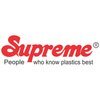
Supreme Industries

PCBL Chemical Limited

Ongc Petro Additions

Castrol
- Home >
- Interviews >
- Sintex BAPL Interview Questions



